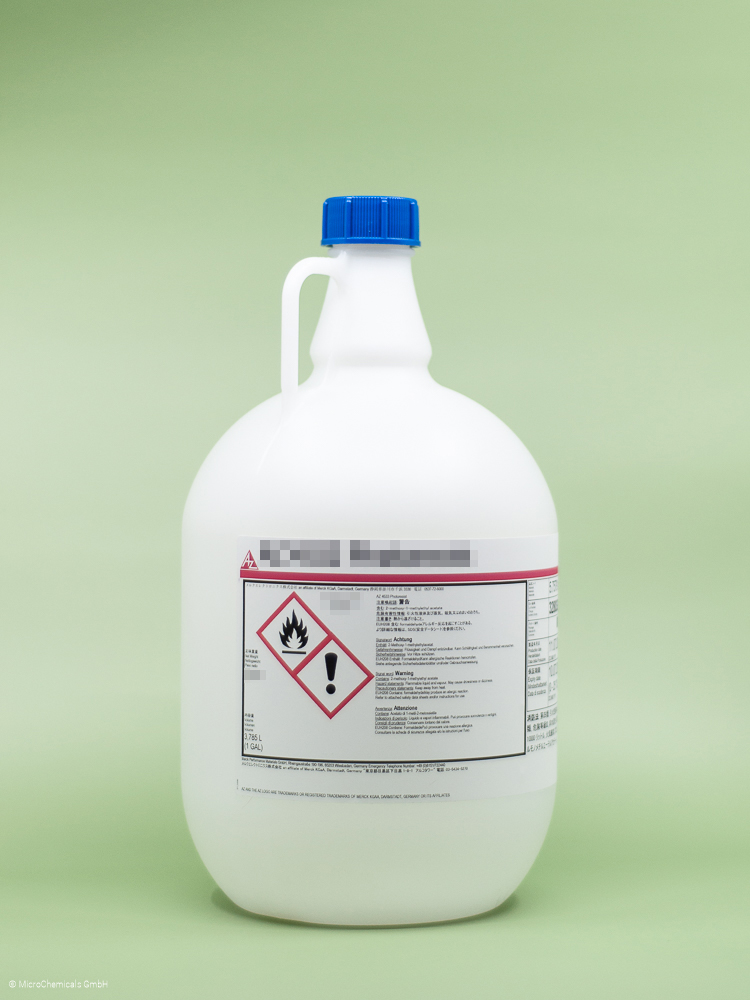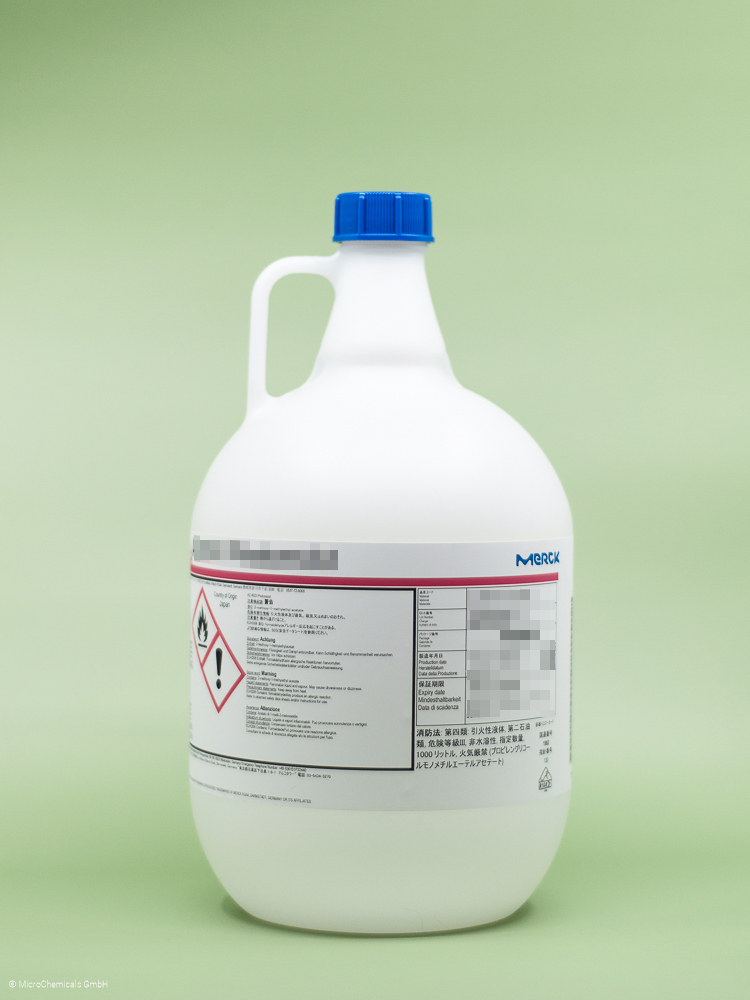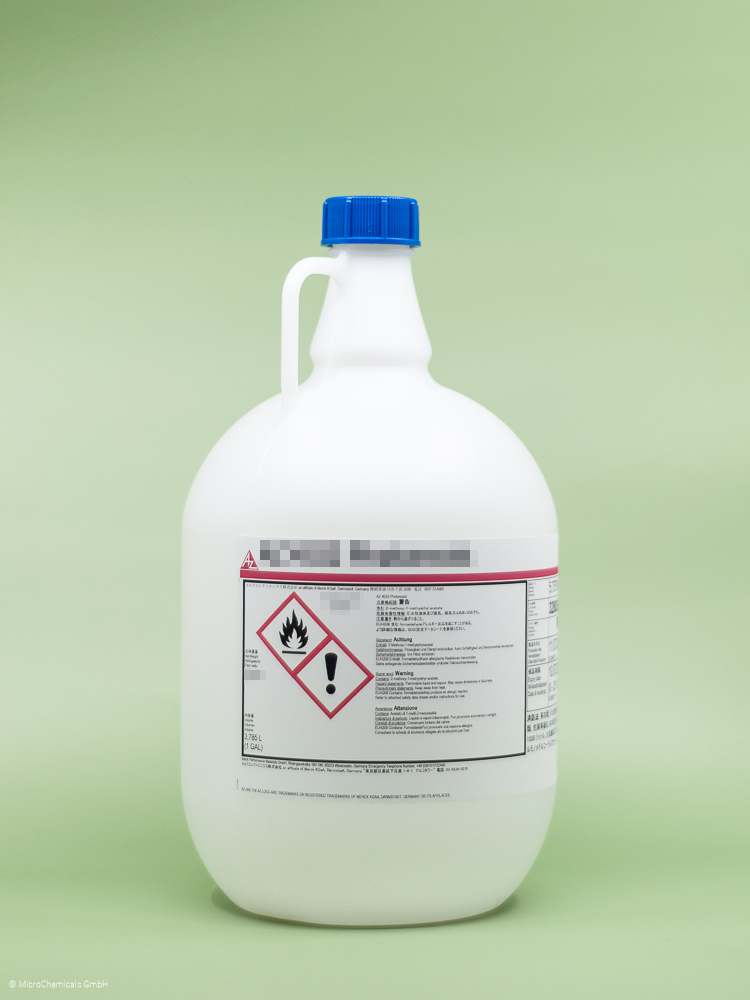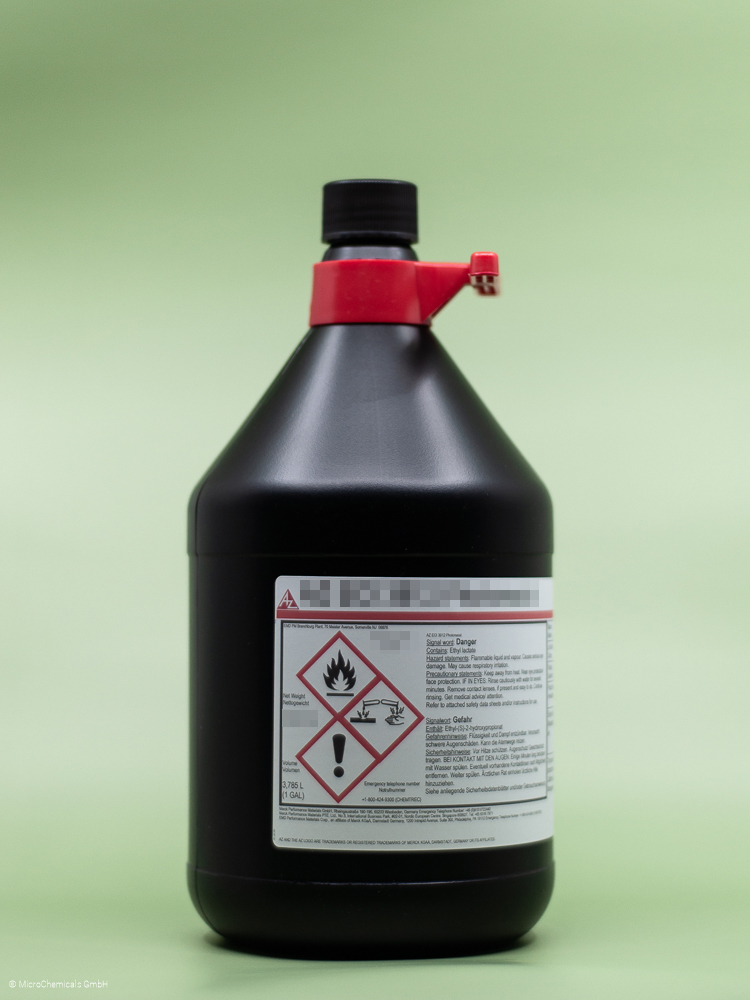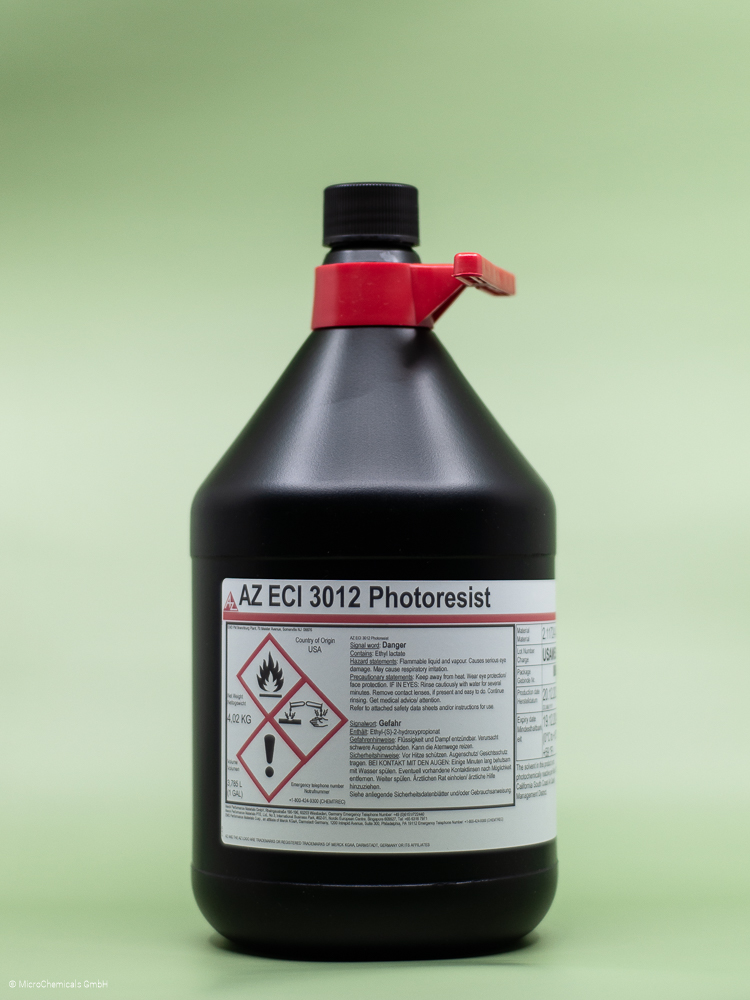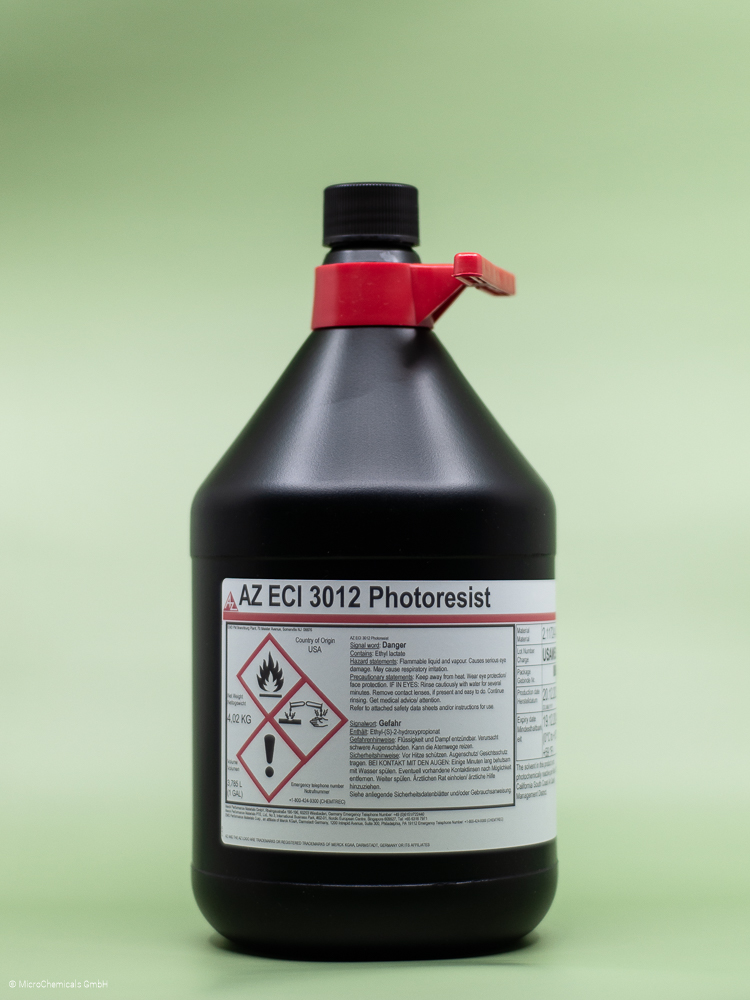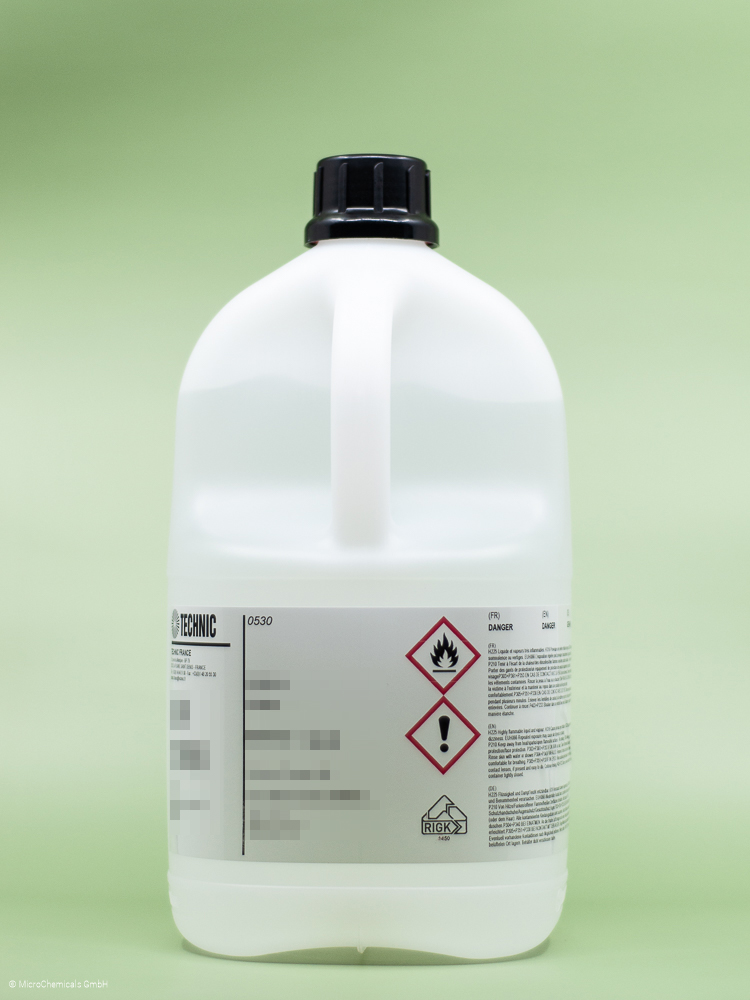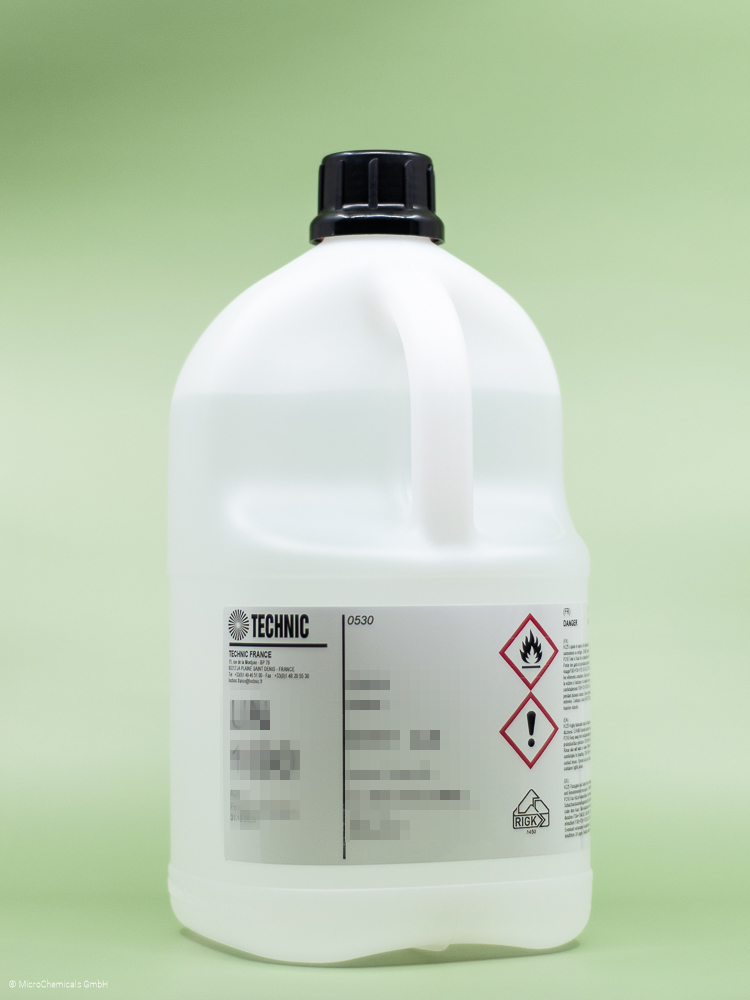AZ 1512 HS Photoresist - 1.00 l
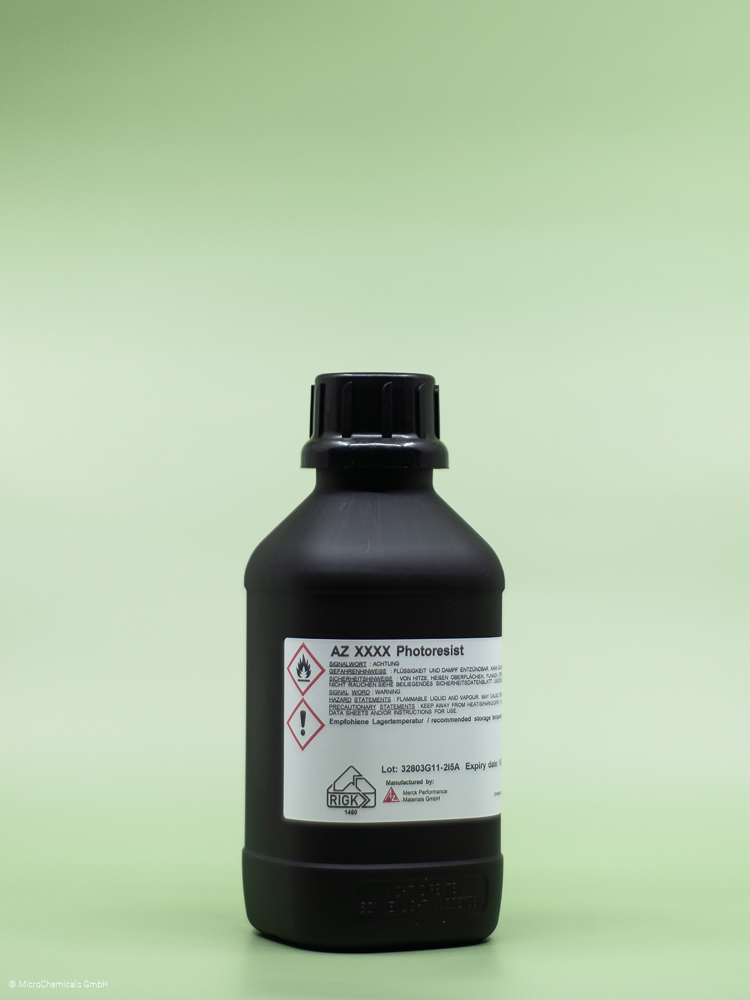











Product information "AZ 1512 HS Photoresist - 1.00 l"
AZ® 1512 HS
Positive Thin Resists for Wet Etching
General Information
The AZ® 1500 photoresist series yields an improved adhesion for all common wet etching processes. The lateral resolution depends on the resist film thickness and reaches down to sub-µm. The very high photo active compound concentration of the AZ® 1512 HS maximises the resist contrast (very high development rate, minimized dark erosion). At 4000 rpm, a coating thickness of approx. 1.2 µm can be attained. A coating thickness of approx. 1.0 – 1.8 µm can also be achieved by varying the spin speed.
Product Properties
- Improved resist adhesion to all common substrate materials
- Broad process parameter window for stable and reproducible litho-processes
- High development rate
- Compatible with all common developers (NaOH-, KOH- or TMAH-based)
- Compatible with all common strippers (e.g. with AZ® 100 Remover, organic solvents or aqueous alkaline)
- g-, h- and i-line sensitive (approx. 320 - 440 nm)
- Resist film thickness range approx. 1.0 – 1.8 µm
Developers
If metal ion containing developers can be used, the NaOH-based AZ® 351B in a 1:4 dilution (for a required resolution < 1 µm 1:5 - 1:6 dilution recommended) is a suited developer. The KOH-based AZ® 400K (also 1:4 - 1:6 diluted) is possible, but due to its lower selectivity not recommended, if a high resolution or steep resist sidewalls are required. If metal ion free developers have to be used, we recommend the TMAH-based AZ® 326 MIF or AZ® 726 MIF** developer, either undiluted, or - for maximum resolution - moderately 3:1 - 2:1 (3 parts Developer:1 part of DI-Water) diluted with water.
Removers
For non cross-linked resist films the AZ® 100 Remover, DMSO or other common organic solvents can be used as stripper. If the resist film is cross-linked (e.g. by high temperature steps > 140°C, during plasma processes such as dry etching or during ion implantation), we recommend the NMP-free TechniStrip P1316 as remover. AZ® 920 Remover can be a good choice as well, in case of harsh treated, hard to remove resist residuals.
Thinning/ Edge Bead Removal
We recommend for thinning and edge bead removal the AZ® EBR Solvent.
Further Information
MSDS:
Safety Data Sheet AZ® 1512 HS Photoresist english
Sicherheitsdatenblatt AZ® 1512 HS Fotolack german
TDS:
Technical Data Sheet AZ® 1512 HS Photoresist english
Application Notes:
Further Information about Photoresist Processing
Related products
Developer
Remover

